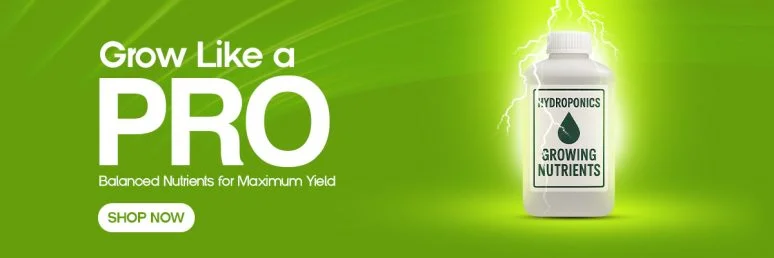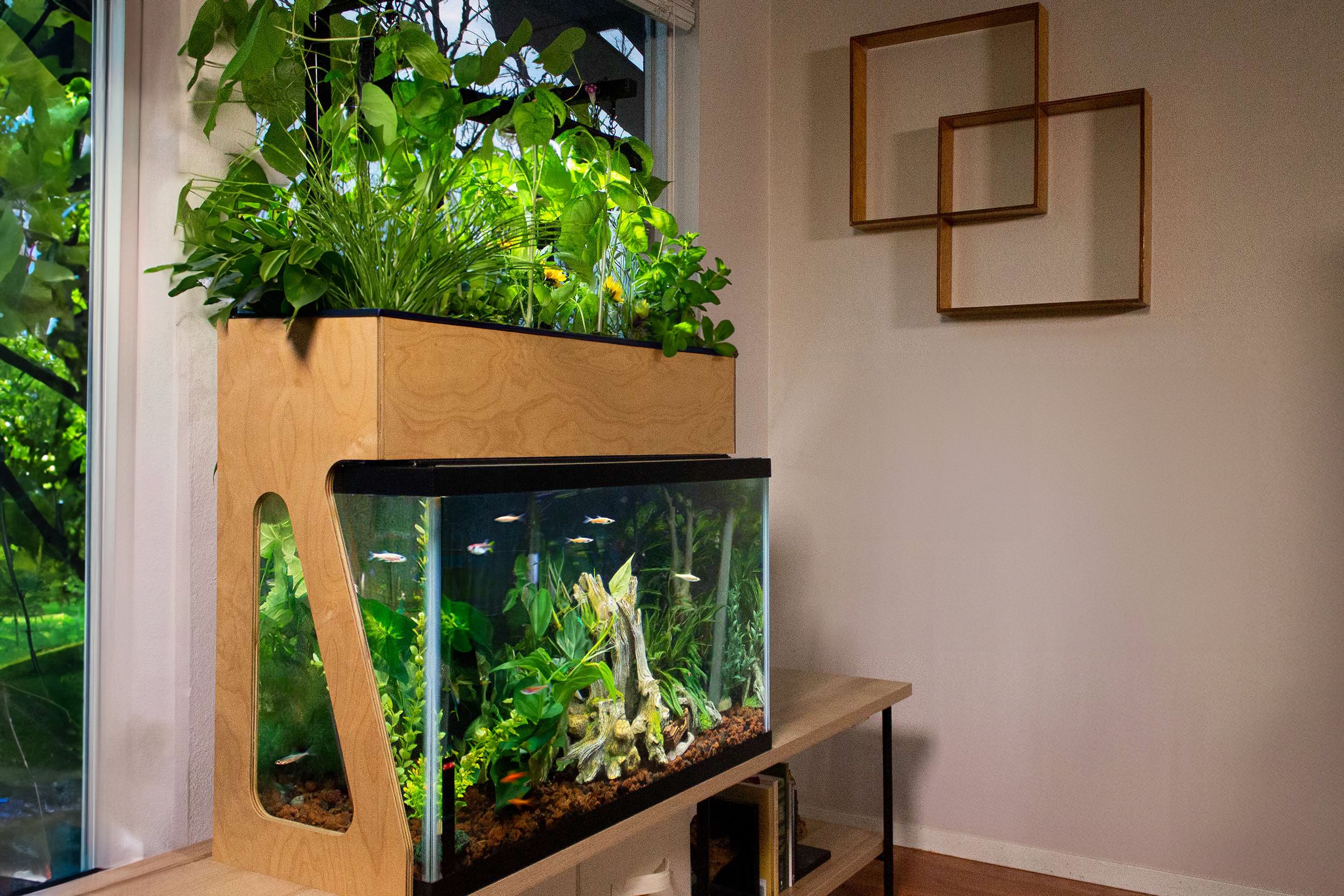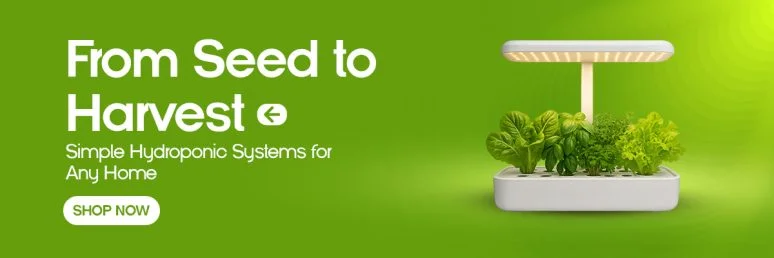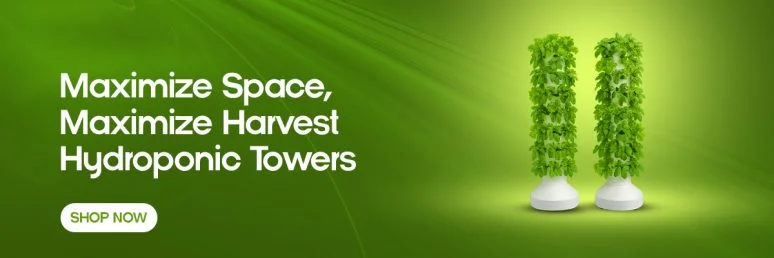Maintaining Water Quality in Fishtank Hydroponics: Keeping Fish and Plants Thriving
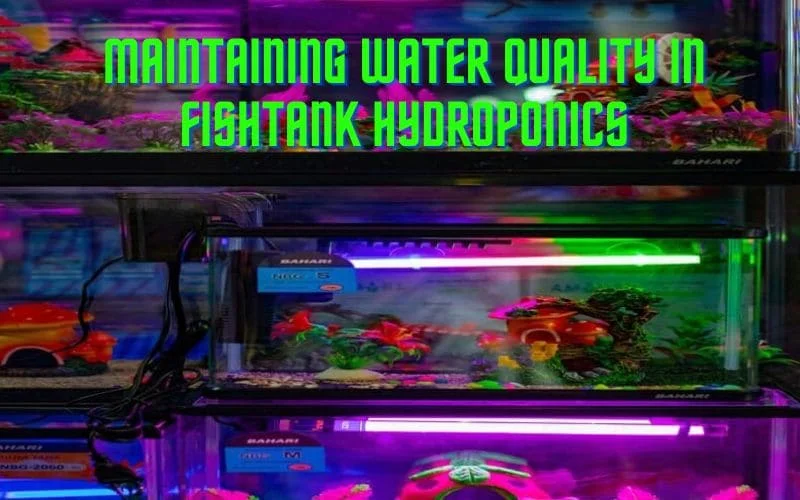
Article-At-A-Glance: Perfect Water Balance for Thriving Systems
- The nitrogen cycle is the cornerstone of fish tank hydroponics, with beneficial bacteria converting fish waste into plant nutrients while maintaining water quality.
- Regular monitoring of five key water parameters (pH, ammonia, nitrite, nitrate, and dissolved oxygen) prevents system crashes and ensures both fish and plant health.
- Proper fish-to-plant ratio is crucial for system balance – too many fish can lead to toxic conditions while too few won’t provide adequate nutrients for plants.
- Seasonal changes require adjustments to water management practices, with summer requiring more frequent top-offs and winter demanding temperature stability.
- Emergency protocols for water quality issues can save your system during critical failures; knowing when and how to intervene is essential for long-term success.
Why Water Quality Makes or Breaks Your Fish Tank Hydroponics
“Hydroponic Garden Aquaponic Fish Tank …” from www.amazon.com and used with no modifications.
Water quality is the absolute foundation of a successful fish tank hydroponic system. Unlike traditional hydroponics that relies on added nutrients, fish tank hydroponics (also called aquaponics) creates a delicate ecosystem where fish waste becomes plant food. When water quality deteriorates, both components suffer simultaneously, potentially leading to complete system failure in just hours.
The beauty of this symbiotic relationship only works when water parameters remain within specific ranges that accommodate both fish health and plant nutrition. Fish produce ammonia through their waste and respiration, which would quickly become toxic without the biological filtration provided by beneficial bacteria and plants. These bacteria convert harmful compounds into plant-available nutrients, creating a natural filtration cycle that, when properly maintained, requires minimal intervention.
For anyone running or planning to start a fish tank hydroponic system, understanding water quality isn’t just helpful—it’s absolutely essential. Many beginners focus exclusively on the visible components (fish and plants) while neglecting the invisible ecosystem that connects them. This oversight is the primary reason why so many first-time aquaponic systems fail within weeks of setup.
The Nitrogen Cycle: The Engine of Your System
At the heart of every fish tank hydroponic system is the nitrogen cycle—a microbiological process that transforms fish waste into plant nutrition. This cycle begins when fish produce ammonia through their gills and waste. Without intervention, this ammonia would quickly reach toxic levels. Fortunately, beneficial bacteria from the Nitrosomonas genus convert this ammonia to nitrite, which is still toxic to fish but represents the crucial first step in the cycle.
A second group of bacteria, Nitrobacter, then converts nitrites into nitrates—the form of nitrogen that plants eagerly absorb through their root systems. This three-step process (ammonia → nitrite → nitrate) is what allows fish tank hydroponics to function as a self-sustaining ecosystem. The plants act as a living filter, removing nitrates that would otherwise build up to harmful levels for the fish.
Establishing this cycle typically takes 4-6 weeks in a new system—a period known as “cycling.” During this critical phase, ammonia and nitrite levels rise and fall in succession until enough beneficial bacteria colonize your system’s surfaces to process waste efficiently. Patience during cycling is crucial; adding too many fish too quickly overwhelms the developing bacterial colony and leads to toxic water conditions. Using test kits to monitor these nitrogen compounds during cycling provides the clearest window into your system’s biological maturation.
“The nitrogen cycle isn’t just a process—it’s the beating heart of your aquaponics system. Respect it, monitor it, and your system will thrive.” — Dr. James Rakocy, Father of Aquaponics
How Poor Water Affects Both Fish and Plants
When water quality deteriorates, fish typically show signs of stress first. You might notice them gasping at the surface (a sign of insufficient oxygen or high ammonia), developing reddened gills, or displaying erratic swimming patterns. These behaviors aren’t just discomfort—they’re desperate survival responses that precede system collapse. Even sub-lethal levels of toxins stress fish immune systems, making them susceptible to diseases that can quickly spread throughout your tank.
Plants reveal water quality issues more subtly but just as definitively. Yellowing leaves often indicate nitrogen deficiencies despite adequate fish waste, suggesting the nitrogen cycle isn’t functioning properly. Browning leaf edges typically point to pH imbalances that prevent nutrient uptake, while stunted growth can result from multiple water quality factors including temperature extremes or mineral imbalances. By the time plants show visible symptoms, the underlying water quality issues have often been present for days.
The most concerning aspect of water quality problems is their cascading nature. For example, dying plant roots release compounds back into the water, consuming oxygen and potentially creating anaerobic zones where harmful bacteria thrive. These bacteria can produce hydrogen sulfide (recognizable by its rotten egg smell), which is toxic to fish even in minute amounts. This creates a dangerous feedback loop: poor water harms plants, which further degrades water quality, which then stresses fish, producing less ideal waste for plants… and the downward spiral continues until intervention.
Essential Water Parameters You Must Monitor
Successful fish tank hydroponics requires monitoring five critical water parameters that directly impact system health. These indicators aren’t just numbers—they’re the vital signs of your living ecosystem, telling you when conditions are ideal or when intervention is necessary. Investing in quality testing equipment and developing a consistent testing schedule transforms water quality management from guesswork to precision.
pH: Keeping Your System in the Sweet Spot (6.5-7.0)
pH represents the acidity or alkalinity of your water and affects nearly every biological process in your system. Most fish tank hydroponic systems thrive when pH levels remain between 6.5-7.0—a slightly acidic range that balances fish comfort with nutrient availability for plants. This narrow window exists because outside this range, certain nutrients become chemically bound and unavailable to plants, regardless of their presence in the water.
In established systems, pH naturally drifts downward (becomes more acidic) as nitrification produces hydrogen ions as a byproduct. This gradual acidification requires regular monitoring and occasional adjustment. Rather than dramatic corrections, successful growers make small, incremental pH adjustments using natural buffers like crushed coral or food-grade calcium carbonate. These gentle approaches prevent pH shock—rapid changes exceeding 0.2 points in 24 hours—which stresses both fish and beneficial bacteria.
Ammonia and Nitrite: Keeping Toxic Levels at Zero
In a properly functioning fish tank hydroponic system, ammonia and nitrite should consistently read zero. These compounds are highly toxic to fish even at concentrations as low as 0.5 parts per million (ppm). Ammonia burns fish gills and damages their nervous systems, while nitrite prevents blood from carrying oxygen properly. Any detectable level of either compound indicates your bacterial colonies are insufficient to process the current waste load from your fish.
Testing for ammonia and nitrite should occur at least twice weekly in established systems and daily in new setups or after any significant change (adding fish, removing plants, or adjusting feeding). Liquid test kits typically provide more accurate readings than test strips, especially at the crucial lower ranges. When these compounds appear, immediate action is required—reduce feeding by 50%, add emergency aeration, and consider a small water change with dechlorinated water to dilute concentrations while your bacterial colony catches up.
Nitrate: The Plant Fuel That Fish Provide
Unlike ammonia and nitrite, nitrate is beneficial in fish tank hydroponics—it’s the primary nitrogen source for your plants. Healthy systems typically maintain nitrate levels between 5-150 ppm, with leafy greens thriving at the lower end and fruiting plants requiring higher concentrations. When nitrate levels exceed 150 ppm, it suggests your plant component isn’t sized appropriately to process the waste your fish produce.
The beauty of a balanced system is that plants efficiently remove nitrates, eliminating the need for water changes that would be required in traditional aquariums. Weekly nitrate testing creates a valuable data point for system balance—rising nitrate levels indicate you need more plants or fewer fish, while falling levels might suggest your plants need supplemental nutrients beyond what your fish provide. The perfect nitrate level creates vibrant plant growth while keeping the water healthy for your fish population.
Dissolved Oxygen: Why Your Fish and Plants Both Need It
Oxygen is the often-overlooked parameter that can make or break system success. Fish obviously require oxygen to survive, but many growers don’t realize that plant roots and beneficial bacteria also consume significant amounts of oxygen. Ideal dissolved oxygen levels should remain above 5 mg/L (or 5 ppm), with levels below 3 mg/L causing stress to fish and inefficient nutrient uptake by plants.
Multiple factors affect oxygen levels, including water temperature (warmer water holds less oxygen), stocking density, plant root mass, and system design. Surface agitation, waterfalls between components, and dedicated air stones increase gas exchange and boost oxygen levels. During summer months or in warmer climates, oxygen management becomes particularly critical as higher temperatures naturally reduce water’s oxygen-carrying capacity. Investing in a dissolved oxygen meter provides the most precise monitoring, though observation of fish behavior (gasping at the surface indicates oxygen deficiency) offers a practical alternative.
Temperature: Finding the Balance for Fish and Plant Needs
Temperature influences virtually every biological process in your system. Most fish tank hydroponic systems perform optimally between 68-75°F (20-24°C), balancing the somewhat conflicting needs of warm-water fish like tilapia (which prefer 75-85°F) and temperate plants like lettuce (which prefer 60-70°F). This compromise range maximizes bacterial activity while preventing temperature-related stress in both components.
Temperature stability matters as much as the specific value—sudden swings of more than 2-3°F within 24 hours can trigger stress responses in fish and slow plant growth. Seasonal adaptations become necessary in outdoor systems, with summertime requiring shade cloth and perhaps chillers, while winter demands insulation or heaters. Digital thermometers with minimum/maximum recording features help track temperature patterns, revealing potential issues like excessive afternoon warming or dangerous nighttime cooling that might otherwise go unnoticed.
Testing Your Water the Right Way
“AquaSprouts Garden – 29 Gal. Aquaponics …” from aquasprouts.com and used with no modifications.
Effective water testing forms the backbone of proactive system management. Testing isn’t merely about collecting numbers—it’s about developing the insights that allow you to anticipate problems before they escalate into emergencies. The difference between successful and struggling systems often comes down to testing discipline and proper interpretation of results.
Aquaponics requires a comprehensive testing approach that goes beyond the basics of traditional hydroponics or aquarium keeping. While hydroponics focuses primarily on nutrient levels and pH, and aquariums emphasize ammonia and nitrite, fish tank hydroponics demands monitoring of all these parameters plus dissolved oxygen, temperature stability, and specific indicators like alkalinity that affect system resilience.
Must-Have Testing Equipment for Home Systems
For reliable water quality management, your testing toolkit should include a pH test kit with a range of 6.0-8.0 and accuracy to at least 0.2 units, liquid test kits for ammonia, nitrite, and nitrate, and a digital thermometer. Liquid test kits generally outperform strips for accuracy, especially at the lower concentrations critical for fish health. For systems larger than 100 gallons, consider adding a dissolved oxygen meter and KH (carbonate hardness) test to monitor buffering capacity.
How Often to Test Based on System Maturity
Testing frequency should align with your system’s maturity and stability. New systems require daily testing of ammonia, nitrite, and pH during the cycling process (typically 4-6 weeks). Once established, these parameters can be checked twice weekly along with weekly nitrate testing. After six months of stability, many experienced growers reduce to weekly comprehensive testing while maintaining daily visual inspections of fish behavior and plant appearance. However, any system change (adding fish, harvesting plants, or environmental shifts) should trigger temporary returns to more frequent testing until stability returns.
Creating a Water Parameter Log to Spot Trends
Recording test results creates invaluable data that reveals patterns invisible to spot checks. A simple spreadsheet or dedicated notebook tracking dates, times, and all water parameters allows you to identify subtle trends like gradual pH drift, seasonal temperature fluctuations, or slowly rising nitrate levels that might otherwise go unnoticed. When problems arise, this historical data often provides the context needed for effective troubleshooting. Many successful growers include notes about fish behavior, feeding amounts, and plant growth alongside water parameters, creating a comprehensive system journal that becomes increasingly valuable over time.
5 Common Water Quality Problems and How to Fix Them
“Fish Tank for Aquaponics …” from gogreenaquaponics.com and used with no modifications.
Even well-maintained systems occasionally encounter water quality challenges. Understanding the most common issues and their solutions transforms potentially devastating problems into manageable situations. These five problems represent the vast majority of water quality challenges in fish tank hydroponics, and mastering their resolution dramatically increases your chances of long-term success.
1. High Ammonia: The Silent System Killer
Ammonia spikes typically result from overfeeding, sudden fish deaths, or insufficient bacterial colonization. When ammonia appears (anything above 0.25 ppm requires action), immediately reduce feeding by 50-75% and increase aeration throughout the system. For levels exceeding 1.0 ppm, a 20-30% water change using dechlorinated water provides immediate dilution while your remediation takes effect. Adding zeolite (a natural mineral that temporarily binds ammonia) to your filter can provide short-term relief while addressing the root cause.
Prevention remains the best approach—feed only what your fish can consume in five minutes, promptly remove any uneaten food, and maintain appropriate stocking densities (generally 1 inch of fish per 3 gallons for beginners). Cycling your system properly before adding a full fish load creates the robust bacterial colonies needed to process ammonia efficiently. Remember that cold temperatures below 65°F significantly slow bacterial activity, potentially causing ammonia accumulation even in previously stable systems.
Adding Air Stones for Better Oxygenation
Air stones are invaluable additions to any fish tank hydroponic system, creating thousands of tiny bubbles that maximize oxygen transfer into your water. The most effective placement is at the bottom of your fish tank, where the longest contact time between bubbles and water occurs. Multiple smaller air stones often outperform a single large one, as they distribute oxygen more evenly throughout the system.
Beyond just supplying oxygen, the gentle water movement created by rising bubbles helps prevent temperature stratification and ensures even distribution of fish waste throughout your system. This circulation is particularly important in larger tanks where dead zones might otherwise develop. During warmer months when oxygen levels naturally decrease, increasing air stone output provides an immediate buffer against potential oxygen depletion.
When selecting an air pump for your air stones, choose one rated for at least twice your tank’s volume to ensure adequate performance. The sound of bubbling water isn’t just pleasant—it’s audible confirmation that your oxygen delivery system is functioning properly. A quick visual check of bubble production should become part of your daily system inspection.
- Place air stones away from filtration intakes to prevent bubble entrapment
- Clean air stones monthly by soaking in a 1:1 water and vinegar solution to remove mineral buildup
- Use check valves on air lines to prevent water backflow during power outages
- Consider battery-powered backup air pumps for emergency situations
Creating Zones for Different Plant Needs
Advanced fish tank hydroponic systems can incorporate specialized growing zones that cater to different plant requirements. Creating these distinct areas allows you to grow a wider variety of plants while maintaining optimal water conditions for your fish. For example, leafy greens thrive in rapid-flow areas with higher oxygen levels, while fruiting plants often prefer zones with slightly higher nutrient concentration.
Strategic system design can create these natural variations without additional equipment. Placing some plants directly above your fish tank exposes them to higher ammonia levels and warmer temperatures, which benefits heat-loving plants like basil and okra. Meanwhile, positioning others at the end of your growing channels provides them with lower nutrient levels and cooler temperatures, ideal for herbs and leafy greens that might suffer from nutrient burn in richer water.
The most sophisticated systems incorporate adjustable flow rates to different growing areas, allowing precise control over how quickly nutrient-rich water moves through various plant zones. This approach creates a “nutrient gradient” throughout your system, naturally accommodating plants with different feeding requirements without needing separate nutrient solutions or complex dosing systems.
Your Seasonal Water Quality Maintenance Plan
Successful fish tank hydroponics requires adapting your maintenance approach to seasonal challenges. The environmental changes throughout the year directly impact water quality and system performance, necessitating proactive adjustments rather than reactive fixes. Creating a seasonal maintenance calendar helps ensure you’re addressing potential issues before they affect your fish and plants.
While indoor systems experience less dramatic seasonal variation, they still require adjustments for heating, cooling, and lighting changes throughout the year. Outdoor systems face more extreme challenges, from potential freezing in winter to excessive heat and evaporation in summer. Understanding these cyclical patterns allows you to maintain stable water quality despite external environmental fluctuations.
Summer Challenges: Dealing With Heat and Evaporation
Summer brings higher temperatures that reduce water’s oxygen-carrying capacity precisely when fish metabolism increases and oxygen demand peaks. Counteract this by increasing aeration, adding shade cloth to reduce direct sunlight on tanks, and potentially reducing fish feeding by 10-15% during the hottest periods. Monitor evaporation closely, as water loss concentrates nutrients and can lead to dangerous imbalances; top off with dechlorinated water daily if needed, and consider automated top-off systems for consistent water levels.
Winter Adjustments: Maintaining Temperature and Growth
Winter challenges revolve around temperature maintenance and reduced plant growth. Insulate exposed pipes and tanks to prevent heat loss, and consider submersible aquarium heaters to maintain consistent temperatures for your fish. Plant growth naturally slows with reduced light, so reduce fish feeding by 25-30% to match the decreased nutrient uptake capacity of your plants. For outdoor systems in colder climates, greenhouse coverings or temporary system relocation may be necessary to prevent freezing damage to components and fish mortality.
Spring Cleaning: Revitalizing Your System
Spring offers the ideal opportunity for comprehensive system maintenance as biological activity increases. Clean mechanical filters thoroughly, trim overgrown root systems that may harbor debris, and carefully inspect all plumbing for mineral buildup that might restrict flow. Consider a 10-15% water change to refresh the system after winter’s slower metabolism period, but maintain sufficient water from the existing system to preserve your beneficial bacterial colonies. This is also the perfect time to divide overgrown plants, reposition components for optimal summer growth, and gradually increase feeding rates as plant growth accelerates.
When to Intervene: Water Quality Emergency Plan
“Aquaponic Fish Tank Review: Is It Worth …” from ourlittlesuburbanfarmhouse.com and used with no modifications.
Despite careful monitoring, emergencies occasionally arise that demand immediate intervention. Having a prepared response plan can mean the difference between a minor setback and complete system collapse. Every fish tank hydroponic system should have a written emergency protocol posted near the setup, outlining specific actions for common critical scenarios like power outages, pump failures, extreme temperature fluctuations, or sudden fish illness.
Red Flags That Demand Immediate Action
Certain warning signs require urgent response regardless of your regular maintenance schedule. These emergency indicators signal potentially life-threatening conditions for your fish and require same-day intervention to prevent cascading system failure. For more detailed guidance, consider exploring hydroponics with a fish tank to understand how to manage such emergencies effectively.
- Fish gasping at the surface or huddling near water inputs (oxygen emergency)
- Sudden water cloudiness or foul odor (bacterial bloom or decomposition)
- Multiple fish deaths within 24 hours (possible toxicity or disease)
- Ammonia or nitrite readings above 1.0 ppm (acute toxicity conditions)
- pH drop below 6.0 or rise above 8.0 (acid or alkaline crisis)
When these red flags appear, immediately test all water parameters to identify the specific issue. Most emergencies stem from either oxygen depletion, toxic compound accumulation, or extreme pH shifts. Document your findings before taking action, as this information helps identify the root cause and prevent recurrence.
The most common emergency intervention involves increasing aeration throughout the system. This simple step buys critical time by increasing oxygen levels while simultaneously accelerating the off-gassing of harmful compounds like carbon dioxide and hydrogen sulfide. For extreme cases involving toxicity, a 30-50% water change with pre-prepared, temperature-matched, dechlorinated water may be necessary.
After addressing the immediate crisis, resist making additional changes for at least 24 hours while continuing to monitor parameters closely. Multiple simultaneous adjustments often compound problems by introducing additional stress to an already unstable system. The goal during emergencies is to stabilize conditions first, then gradually return to ideal parameters over several days rather than forcing rapid corrections.
Emergency Water Changes Without Harming Bacteria
When emergency water changes become necessary, preserving your beneficial bacterial colonies is crucial for quick recovery. Always use dechlorinated water at a temperature within 2°F of your system water, and never change more than 50% of volume at once to maintain sufficient bacteria. Consider keeping emergency water in storage containers with air stones running continuously, creating pre-conditioned water that’s immediately available for emergencies without the chlorine or temperature concerns of fresh tap water.
Temporary Housing for Fish During System Recovery
In catastrophic situations like component failure or extreme contamination, temporarily relocating fish may become necessary. Prepare a designated “hospital tank” with a separate filter, heater, and air stone that can be quickly established using water from your main system. This separate habitat should include hiding places to reduce stress and can sustain your fish population for several days while major system repairs occur. After resolving the primary system issue, reintroduce fish gradually rather than transferring all at once to minimize stress during the transition back to the restored environment.
Fine-Tuning Water for Specialized Plant and Fish Needs
“VIVOSUN 3-Gallon Aquaponic Fish Tank …” from www.amazon.com and used with no modifications.
Advanced fish tank hydroponic systems can benefit from targeted water customization that addresses the specific needs of particular fish species or plant varieties. While the basic parameters remain consistent, fine-tuning certain aspects of water quality can dramatically improve performance for specialized crops or sensitive fish species. This customization represents the difference between a functional system and a truly optimized one.
Calcium and potassium supplementation often becomes necessary for fruiting plants like tomatoes and peppers, which require these minerals in higher concentrations than leafy greens. Adding food-grade calcium carbonate not only supplies calcium but also helps stabilize pH in systems that tend toward acidity. Similarly, potassium bicarbonate provides both potassium and alkalinity, addressing multiple needs simultaneously without introducing harmful compounds.
For fish with specialized requirements, consider species-specific adjustments like adding driftwood for acid-loving species or crushed coral for those preferring alkaline conditions. These natural amendments work gradually to maintain ideal conditions without the dramatic shifts that chemical adjustments might cause. Remember that any addition to your system becomes part of your water ecology, so always research potential interactions before introducing new elements.
“The most successful fish tank hydroponic systems aren’t those with the most equipment, but those with the most consistent water quality. Understanding your specific fish and plant needs allows you to make precise adjustments rather than following generic recommendations.” — Dr. Wilson Lennard, Aquaponic Researcher
Frequently Asked Questions
The journey into fish tank hydroponics brings many questions as systems mature and challenges arise. These frequently asked questions address the most common concerns that both beginners and experienced growers encounter. While every system has unique characteristics, these foundational answers apply to most setups and can guide your decision-making process.
Remember that fish tank hydroponics combines two complex disciplines—aquaculture and hydroponics—so perfect answers sometimes require balancing competing needs. The art of successful growing comes from finding the equilibrium point where both components thrive despite occasional compromises.
How often should I test water in my new fish tank hydroponics system?
For new systems under six months old, test ammonia, nitrite, and pH every other day until parameters stabilize consistently for three consecutive weeks. Once established, test these critical parameters twice weekly while checking nitrate and temperature weekly. After a full year of stability, many experienced growers reduce to weekly comprehensive testing while maintaining daily visual inspections of fish behavior, water clarity, and plant appearance. However, immediately resume more frequent testing after any significant system change like adding fish, removing plants, or during unusual weather conditions that might impact water quality.
Can I use tap water in my hydroponics system, or do I need special water?
Tap Water Treatment Protocol: 1. Fill containers 24-48 hours before use 2. Add dechlorinator according to package directions 3. Add air stone to accelerate chlorine dissipation 4. Test chlorine levels before adding to system 5. Match temperature to within 2°F of system water
Most municipal tap water works perfectly well in fish tank hydroponics after proper dechlorination to remove chlorine and chloramine. Standard aquarium dechlorinators effectively neutralize these chemicals that would otherwise harm fish and beneficial bacteria. However, tap water quality varies significantly between locations, so testing your source water provides valuable baseline information about minerals and potential contaminants.
Well water users should test for iron, hydrogen sulfide, and hardness levels that might impact system performance. Extremely hard water (above 250 ppm calcium carbonate) can lead to mineral buildup on equipment and affect nutrient availability, while very soft water (below 50 ppm) may require calcium supplementation for proper plant development.
Rainwater collection offers an excellent alternative where legal and practical, providing naturally soft water free from municipal additives. However, rainwater lacks minerals that buffer pH, potentially leading to more dramatic pH fluctuations that require closer monitoring.
Regardless of your water source, always allow new water to reach system temperature before adding it to avoid thermal shock to fish and bacteria. Temperature matching is particularly important during emergency water changes when fish may already be stressed.
What’s the fastest way to cycle a new aquaponics system safely?
The most reliable cycling method uses established filter media or gravel from an existing aquarium or aquaponic system, which introduces mature bacterial colonies immediately. This “seeded” approach can reduce cycling time from the typical 4-6 weeks to as little as 10-14 days. Without access to established media, commercial bacterial starters provide a good alternative, though results vary by product quality. During cycling, maintain ammonia levels between 2-4 ppm using either fish food (which decomposes into ammonia) or pure ammonia solutions marketed for fishless cycling.
Patience remains the most important factor regardless of method—adding fish before cycling completes inevitably leads to ammonia stress and potential fish loss. Success is confirmed only when your system can process 1 ppm of ammonia completely to nitrate within 24 hours, indicating sufficient bacterial colonization to support a fish population. Begin with just 20% of your planned fish stocking level, adding more gradually over 2-3 months as the bacterial colony expands to match the increasing waste load.
How do I lower nitrates if my plants aren’t absorbing them quickly enough?
When nitrate levels exceed 150 ppm despite healthy plants, your system has reached an imbalance between fish waste production and plant uptake capacity. The most immediate solution is a partial water change of 15-25% to dilute nitrate concentration, but this addresses the symptom rather than the cause.
- Increase your growing area by adding more plants, particularly fast-growing, nitrogen-hungry varieties like lettuce, basil, and pak choi
- Reduce fish feeding temporarily by 25-30% to decrease waste production
- Ensure adequate lighting for plants, as insufficient light limits nutrient uptake regardless of availability
- Check water temperature, as cooler water slows plant metabolism and nutrient absorption
For long-term solutions, consider adding a dedicated nitrate filter containing anaerobic denitrifying bacteria that convert nitrate to nitrogen gas. These specialized filters require low-oxygen zones and a carbon source like ethanol to function properly. Commercial denitrification media designed for reef aquariums works effectively in fish tank hydroponics but requires careful monitoring during initial setup.
Some growers incorporate floating plants like duckweed or water lettuce as “nitrate sponges” that can be easily harvested and composted when overgrown. These plants thrive in high-nitrate environments and provide supplementary filtration without competing with your main crop plants for space or resources.
Remember that slightly elevated nitrates (40-80 ppm) actually benefit most plants, and chasing unnecessarily low levels may reduce overall system productivity. The goal is balance, not elimination.
What fish species are most tolerant of fluctuating water parameters?
For beginners or systems in challenging environments, certain fish species demonstrate remarkable resilience to parameter fluctuations. Tilapia remains the gold standard for tolerance, handling pH ranges from 6.0-8.5, temperature variations between 60-90°F, and oxygen levels as low as 3 ppm without immediate distress. This adaptability makes tilapia ideal for new systems still achieving stability or outdoor setups subject to weather variations.
Common goldfish (not the fancier varieties) offer excellent cold-water alternatives, thriving in temperatures from 50-75°F while tolerating pH shifts between 6.5-8.0. Their hardiness makes them particularly suitable for systems in cooler climates where heating costs would otherwise become prohibitive. Additionally, goldfish produce significant waste relative to their size, providing abundant nutrients for plants even with modest stocking densities.
For smaller indoor systems, white cloud mountain minnows combine temperature flexibility (60-80°F) with striking appearance and peaceful behavior. These underrated fish handle pH fluctuations well and consume less oxygen than larger species, reducing aeration requirements for apartment-sized systems. While not as productive in terms of waste as tilapia or goldfish, their modest nutrient contribution suits herb gardens and microgreen production perfectly.
Aquaponics Academy offers comprehensive training for both beginners and advanced growers looking to optimize their fish tank hydroponics systems. Whether you’re struggling with water quality issues or ready to scale up your production, our expert consultations provide personalized solutions based on decades of practical experience. Visit Aquaponics Academy to unlock the full potential of your system through our video courses, live workshops, and community support network.

